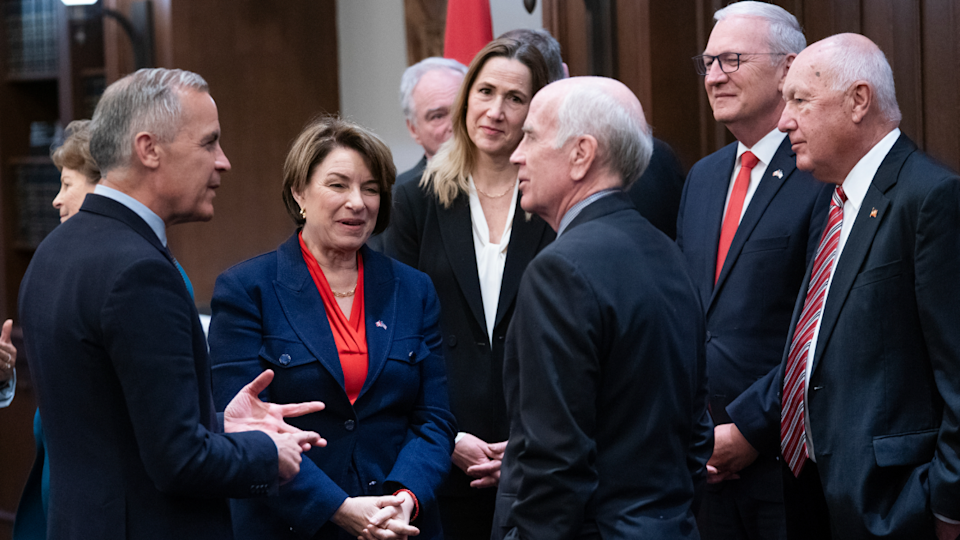In what could mark a significant moment for Canada–U.S. relations, Canadian Prime Minister Mark Carney and U.S. Ambassador Pete Hoekstra have voiced optimism about a forthcoming agreement that would strengthen both economic and security ties between the two nations.
During an interview with Global News, Ambassador Hoekstra stated, “All the indications are that we could move toward a very positive agreement,” referring to the ongoing bilateral negotiations underway in Ottawa and Washington. The Prime Minister’s Office echoed similar sentiments, suggesting that the talks are “constructive” and reflect “mutual interests.”
This statement comes amid growing regional and global challenges, including rising geopolitical tensions, shifting trade dynamics, and the evolving role of North America in global security alliances.
A Reset in Cross-Border Cooperation
Since assuming office, Prime Minister Mark Carney has made revitalizing Canada’s foreign relations a key part of his mandate. His background as the former Governor of both the Bank of Canada and the Bank of England lends him a unique understanding of international economic frameworks. Now, he appears focused on deepening cross-border integration with the United States.
Ambassador Pete Hoekstra, a former U.S. congressman and Trump-appointed diplomat, has served in roles that emphasize defense and strategic alignment. His recent comments suggest a renewed bipartisan interest in enhancing Canada–U.S. cooperation—especially in areas such as:
- Trade modernization
- Joint defense operations and NORAD upgrades
- Critical minerals and clean energy collaboration
- Cybersecurity and intelligence sharing
This optimistic outlook is seen by analysts as a sign that both countries are ready to adapt to changing global realities by leveraging each other’s strengths.
Economic Stakes: Jobs, Trade, and Infrastructure
Canada and the U.S. are each other’s largest trading partners. According to the Office of the United States Trade Representative, in 2023, bilateral trade in goods and services exceeded $900 billion.
However, friction points have emerged over issues such as:
- Softwood lumber tariffs
- Buy American provisions
- Automotive manufacturing rules of origin
- Digital trade and data localization
With high-level talks progressing, experts believe the new agreement could aim to reduce red tape, promote mutual access to government procurement contracts, and stimulate innovation in areas such as AI, green tech, and cross-border logistics.
“The economic interconnectedness between Canada and the U.S. is undeniable. Modernizing this relationship is crucial for both sides,” said economist Jennifer Forster at the University of Toronto.
Shared Security: NORAD and Beyond
Security is a central element of the discussions. The modernization of the North American Aerospace Defense Command (NORAD) is high on the priority list, particularly as threats evolve in the Arctic and cyberspace. Canada recently pledged $38.6 billion CAD over two decades to upgrade its NORAD infrastructure, and this proposed agreement could further cement joint command initiatives.
Additionally, growing tensions in the Pacific and Arctic underline the strategic value of aligning defense logistics and intelligence networks. According to a Pentagon report in April 2025, closer collaboration with Canada enhances U.S. situational awareness across the northern hemisphere.
What’s Next?
Officials from both nations have indicated that a formal announcement could come as early as July 2025, possibly timed with U.S. Independence Day celebrations or Canada Day.
The agreement would likely require approval from both legislative bodies: the Canadian Parliament and the U.S. Congress. Given the early bipartisan tone of the negotiations, early signs suggest a smoother-than-expected ratification process—though labor unions, environmental groups, and Indigenous leaders are expected to weigh in.
Public Reaction and Political Calculations
The announcement has sparked optimism among business leaders and policymakers alike. However, some voices have warned about potential downsides.
- Environmental groups are urging the government to include strong climate protections in any infrastructure or energy agreements.
- Labor advocates are pushing for guarantees on wage standards and local job protections.
- Conservative MPs have called for increased transparency on digital privacy issues tied to U.S. tech partnerships.
Still, with both Carney and Hoekstra presenting a united front, the overall sentiment is one of cautious optimism.
Conclusion
As Canada and the U.S. inch closer to what may be a landmark agreement, the potential benefits—economic stability, improved defense readiness, and diplomatic alignment—could reshape North American cooperation for the coming decade.
This emerging deal is not just about policies or tariffs—it’s about rethinking the way Canada and the United States work together in an increasingly volatile world.

